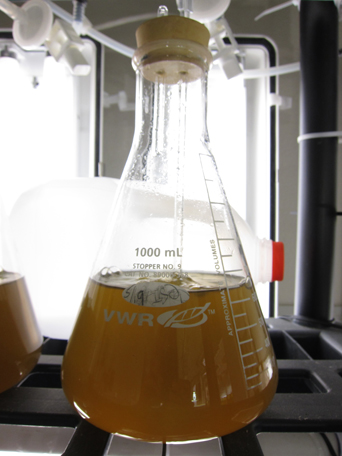At first glance, the Kachemak Shellfish Mariculture Center looks just like any other building on the Homer Spit.
But what’s going on inside is a far cry from the restaurants, galleries and fishing charter businesses found on the Spit.
For years, most of the oyster seed, or spat, for Alaska’s oyster farms came from the West Coast. But a catastrophic die-off about four years ago has left oyster farmers in Alaska struggling.
The die-offs usually are attributed to changes in water chemistry, and many are blaming ocean acidification for the massive casualties. Whatever the reason, the shortage is causing many Alaska oyster farmers to look toward alternative sources for seeding their farms.
Realizing the potential consequences of the die-off for the oyster industry, the Kachemack Shellfish Mariculture Association, or KSMA, decided to step in. Formed more than 20 years ago, KSMA was established with a central mission of supporting oyster farmers in the Kachemak Bay area.
In 2012, KSMA decided to expand its activities and built their own local hatchery off the Homer Spit to help serve the oyster farms in the Kachemak Bay area.
“We decided to do it ourselves with very little experience and very little money,” says Sean Crosby. Crosby, along with Suzanne Torian, helps maintain the hatchery and is an oyster farmer himself. He has worked for the Kachemak Shellfish Mariculture Association for five years.
Although they claim to have jumped in with little experience, you wouldn’t know it by looking at the system itself.
Located in the back of the building, the hatchery is a small room that is packed with PVC pipes, water tanks, and a whole wall of beakers. Each piece plays an integral part in the oyster’s growth, and the atmosphere whirs with efficiency.
It all begins with the algae that fill the beakers. This is what the oysters will eat. In a painstaking process that takes place over weeks and months, different types of algae are cultured out in increasingly large beakers. Several different types of algae are grown, and each one serves a different purpose for the developing oysters.
One is specifically for shell growth, what Crosby calls the “meat” of the oysters’ diet. Another is a flagellate that he describes as more of the “salad” or “veggies” for the growing spat. The oysters eat 2,200 liters a day, more than 5.5 trillion cells of algae.
The oysters themselves sit on screens as the algae water is fed up to them, some of them so tiny that they look like grains of sand. Once they reach a certain size, they’ll move to a floating nursery in Halibut Cove, usually in early June. After they finish growing there, they’ll be ready to sell off to the oyster farms in Kachemak Bay.
The hatchery is making some waves in the oyster business because of the conditions they’ve had success in. Many Alaska experts told them it was impossible for them to grow oysters under these conditions.
“Lab studies have shown that water at our pH wouldn’t allow oysters to cement under their shells,” says Torian.
However, the hatchery has flourished with three million oysters grown last year, and an estimated six million grown this year.
“pH is being blamed down south as one of the reasons why the oyster population crashed, but we have succeeded. … It’s calling into question a lot of studies that have been done,” says Crosby.
“It’s fascinating. We were told we could never do it, but we’re one of the more successful hatcheries in Alaska,” adds Torian.
So what’s their secret?
“Real hard work,” says Torian.
Crosby nods his head in agreement and adds, “Most guys work eight to five and when the bell rings they’re out of there. But we don’t have that luxury. We have to be here in case something goes wrong, even at one in the morning.”
That work has paid off, with more than 300,000 oysters sold from the hatchery to local farmers last year and an estimated two million sold this year.
Next year, the hatchery is planning on offering internships to area youth.
Approximately 80 percent of the hatchery’s oysters sold stay here in Alaska, very likely on the next plate you order from any number of Homer eateries.
Aryn Young is a freelance writer who recently moved to Homer from Texas.


